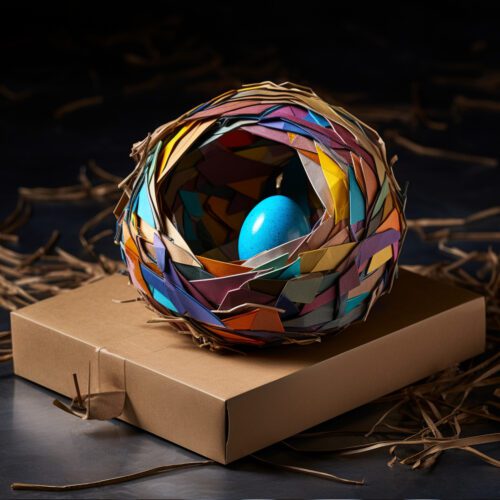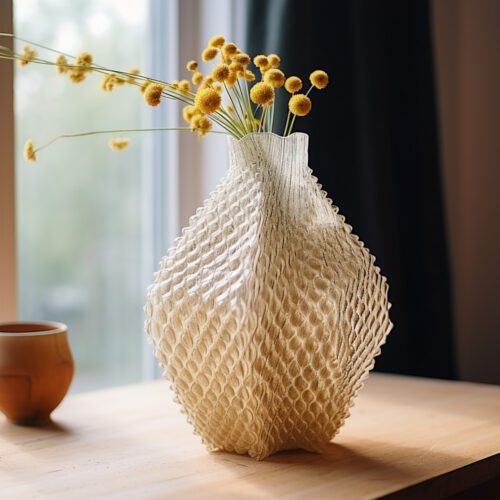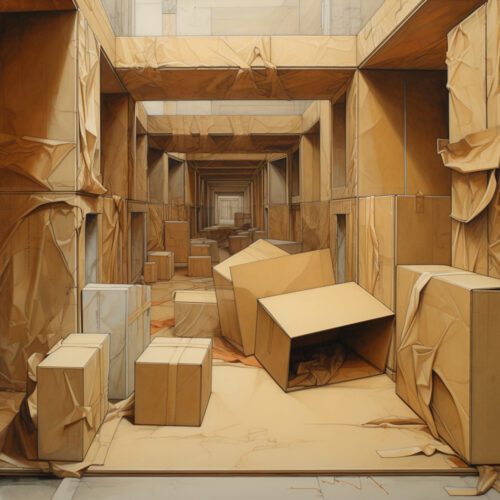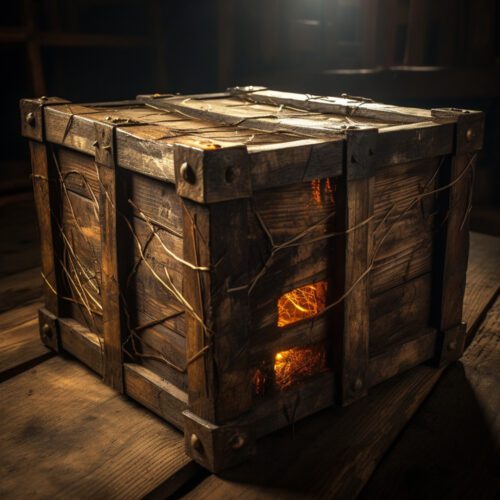
How to Ship Glass
Boha has been successfully sending glass around the world for over a decade and has learned a lot over those years.
Although we buy our packaging materials in bulk, we have created affiliate links to the best-quality packaging products on Amazon.
We often get asked how to pack and ship glass or what the best way to package glass is by our glass artists, who are packaging and shipping expensive glass art for the first time.
Below, we have outlined the different packaging methods that combine light packaging with as much protection as possible.
Be sure to check the glass thoroughly before sending it, and clean it with a damp, lint free cotton cloth. Do not let any of the sticky tape come into contact with the glass.
Remember that delicate, thin, or ornate glass will need a lot more bubble wrap than solid crystal objects.
What is the best way to package glass?
How should you ship glass? The best way to package glass is by protecting it from outside impacts. The deeper the glass is embedded in the box, the more protected it is.
Method 1: The Paper Nest Method
For lighter, single glass pieces, the paper nest method is cheap and very safe. This is how you protect glass when posting without using lots of packaging materials.
Firstly, you need to choose a cardboard box that is bigger than the piece of glass by 10 cm on each side. For example, if you are sending a piece that is 30 cm in length, 30 cm wide, and 60cm in height, you would need a box of 50cm x 50cm x 80cm.
Second, you will need some strong brown packaging paper. We use Kraft packaging paper, or you can use Honeycomb Kraft Packing Paper Roll. Take one large piece and scrunch it up into a nest at the bottom of the box, so that the paper comes just over halfway up the inside of the box.
Next, create a little nest in the packaging paper and put in the piece of glass. It does not need to be wrapped in anything else. If it has a stopper, then the stopper will need to be wrapped up separately.
Once the glass is nested in place, with about 10cm minimum between the glass and the box wall, take another large piece of packaging paper, scrunch it up and put it over the top of the glass. Make sure you scrunch it down the sides of the glass on all four sides as well. When you try and close the lid of the box you should meet some resistance. If not, then you need to stuff more scrunched brown paper down on top until the glass is secure. It should be so tight that the glass does not move in the box when you shake it. As long as the glass is surrounded by at least 10cm of compacted packaging paper on all sides, it should arrive safely.

Method 2: Bubblewrap and cardboard
If you have two pieces of glass you want to send or a heavier piece of glass, then the bubble wrap and cardboard provide additional support without massively increasing the weight of the box. This is how to pack and ship glass without breaking and without using the double box method.
Again, you will want to have 10cm of packaging on every side between the glass and the wall of the box and 10 cm of packaging between the two pieces of glass.
Firstly, wrap the individual pieces of glass up in three layers of bubble wrap. This can be done with Honeycomb Kraft Packing Paper Roll if you do not have any bubble wrap, or combine the two with the honeycomb on the outside as the last layer. Seal it up with sticky tape to keep it tight. Take each one and wrap it in a cardboard roll at least twice around, and fix it with stick tape as well. Make sure that the corrugated cardboard roll goes over each end of the glass by an additional 10 cm. Then, fill the box over halfway with biodegradable packing peanuts or scrunched brown Kraft paper. Some people use shredded paper from their paper shredder, but we have found that customers don’t like this as it makes a mess.
Put a piece of stiff cardboard sheet on top of the peanuts, and put the first piece of glass in the box.
The stiff piece of cardboard helps to keep the peanuts in their place and stops them from moving around so much.
Gently press the glass down into the biodegradable packing peanuts and add 20 cm of peanuts on top, then another stiff piece of cardboard and then the next piece of glass, and then fill up the box to the point of overflowing. Hold up all four ends of the top of the box, add more peanuts, and then close the box. It should be hard to close the cardboard box on the peanuts.
Make sure the glass does not move in the box. Once you have taped it up, give the box a shake and make sure the glass is not moving inside. If it is, you will need to reopen the box and add more peanuts / brown paper.
Taping Up
When you are taping up the cardboard box, there is no real difference between brown packaging tape and clear packaging tape. Clear packaging tape is good if you don’t want to obscure the cardboard box, and brown is good as it blends in well with the colour of a brown cardboard box. That’s it, really. There is no other major difference.
My personal preference is to close the box up with clear tape, going at least two times right around the box. I then used brown packaging tape in three lines, going twice around both horizontally and vertically around the box. I use a packaging tape gun and spin the box around on a shiny wooden floor. It is easier on a smooth floor than on a carpet. Make sure you secure the box in three lines around the side and over the top, both lengthways and widthways. For even more security, you can put tape along the edges of the box to give extra strength to the seams and to the box corners.
Packaging tape is cheap, and glass is not. A lot of knowing how to pack and ship glass safely comes down to being extravagant with the use of packing tape.
Finally, I put a line of fragile packaging tape in one line both horizontally and vertically.
I don’t know if it makes the delivery people treat it any more delicately, but it makes me feel better. The way I pack it is so that the whole delivery department could play football with the box, and not only would it survive thanks to the excessive tape, but the glass would be snug and secure too!

Method 3: Box in a Box
This is the safest of the cardboard box methods. It can be one box inside another box or several boxes stacked inside one big box.
If you are putting several boxes inside one bigger box, then you need to pack it as securely as in Method 2: bubble wrap and cardboard, and you will need to ensure there is 10cm of packaging between the glass and the box wall. For additional safety, you can add peanuts and stiff cardboard between each box. For example, let’s say you are packing four boxes containing glass inside one larger box. First, put a 20cm layer of peanuts in the box and cover it with cardboard. Put in the 4 boxes and separate them from each other and from the wall of the box with stiff cardboard or corrugated cardboard roll folded at least in half.
As an alternative, you can use peanuts to separate them. The difficulty with peanuts is that they can move around if they are not packed together very tightly, so we also use cardboard sheets to separate the different layers and ensure there is no movement.
Next, add another stiff cardboard sheet and fill the rest of the box with peanuts to overflowing. Tape up the box as before.
If your box is one of many boxes being put on a pallet and wrapped in pallet stretch wrap cling film then you don’t really need to worry about adding peanuts and additional measures. As long as the internal boxes are well packaged, you can pack them neatly next to one another in a box at the exact right size.
For really expensive pieces of glass, you will want to use the box-in-a-box method, with just one box inside of the other box. Pack the internal box using Method 2: Bubblewrap and cardboard, then half-fill the outer box with peanuts and then put the box in and fill up the box to overflowing. Really pack it down to ensure there is no movement. There should be at least 10cm on every side between the internal box and the outer box wall. This is the ultimate way on how to pack and ship glass safely using only cardboard boxes.

Method 5: Bespoke Wooden Crate
Some glass artists use glass crates to send their glass out, as it gives more protection from external knocks. The only real drawback is that the glass still needs to be very well protected inside, or the vibration of the outside knock can travel inside the box and cause breakages. There has to be a complete separation between the outside of the crate and the inside. Do not attach the glass piece to the internal wooden bracing, as the vibration will travel through the whole box. The best way to use the additional security of the wooden crate is to use the box-in-a-box method and then put that box in a crate. This is called the box-in-a-box-in-a-crate method 🙂
One of our artists creates tall, thin glass sculptures with delicate tapered ends and uses the crate method. If you have long, thin glass pieces to send, we would recommend providing extra strength by wrapping the glass in lots of bubble wrap and then putting each one into a purpose-made plastic tube. Then wrap each tube in more bubble wrap and wrap that in a cardboard roll. Then surround them in peanuts separated by stiff cardboard or folded corrugated cardboard roll, and then seal up the cardboard box and put it inside a purpose-built wooden box. This method is for very fragile, expensive art glass that you are sending internationally.
Shipping
There are lots of shipping companies to choose from, but none of them will insure you for breakage, only for lost packages. We don’t bother with any insurance except the standard minimum and rely on our packaging to protect the piece.
Nowadays, with parcels being scanned every time they move, it is very unlikely that your parcel will be lost. We tend to go for price over all other factors.
We have tried a few smaller start-up companies, but they do not have the technology, and the risk of loss is greater. We prefer to stick with the big players.
We use ParcelBroker, which is a parcel comparison site, to find the best deal. Most often, our parcels tend to go out with DHL or FedEx. It is cheaper to go through ParcelBroker than it is to go directly to DHL, as ParcelBroker passes on a substantial amount of their bulk buy discount back to the client, which makes them very competitive.
If you found this ‘how to pack and ship glass’ information useful, then please come to our shop and have a browse or buy using one of the affiliate links on this page.
If you have any further tips to add, please post them below, and I will add them to this article to give future readers the best advice possible. Thank you!
